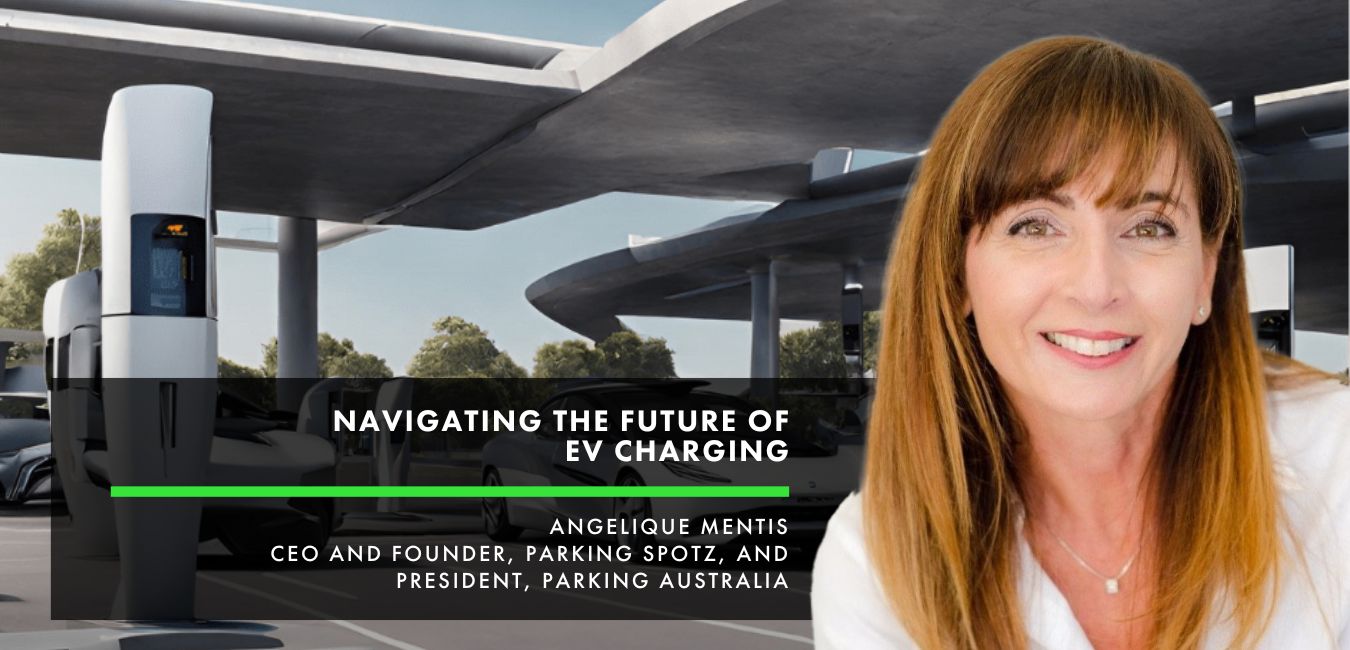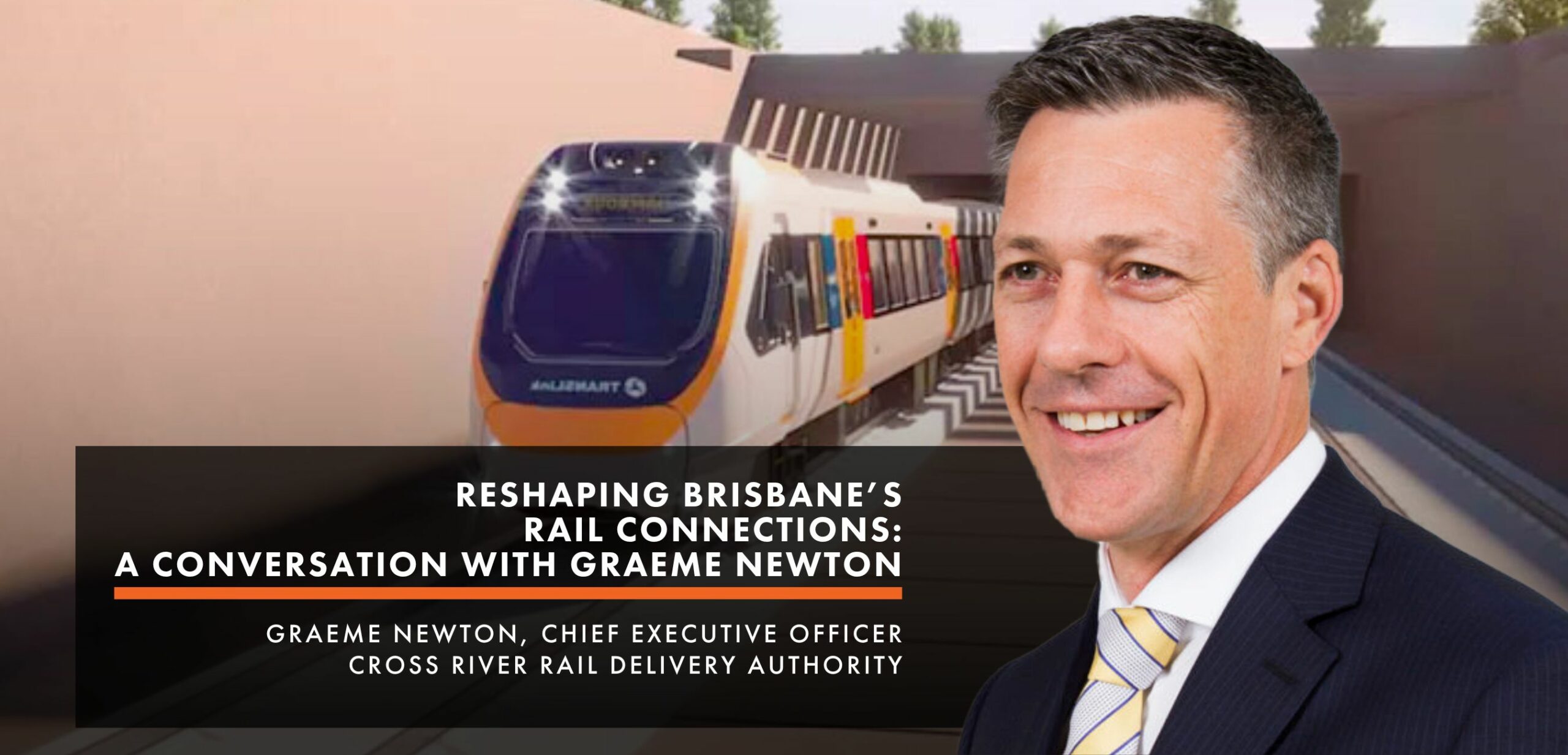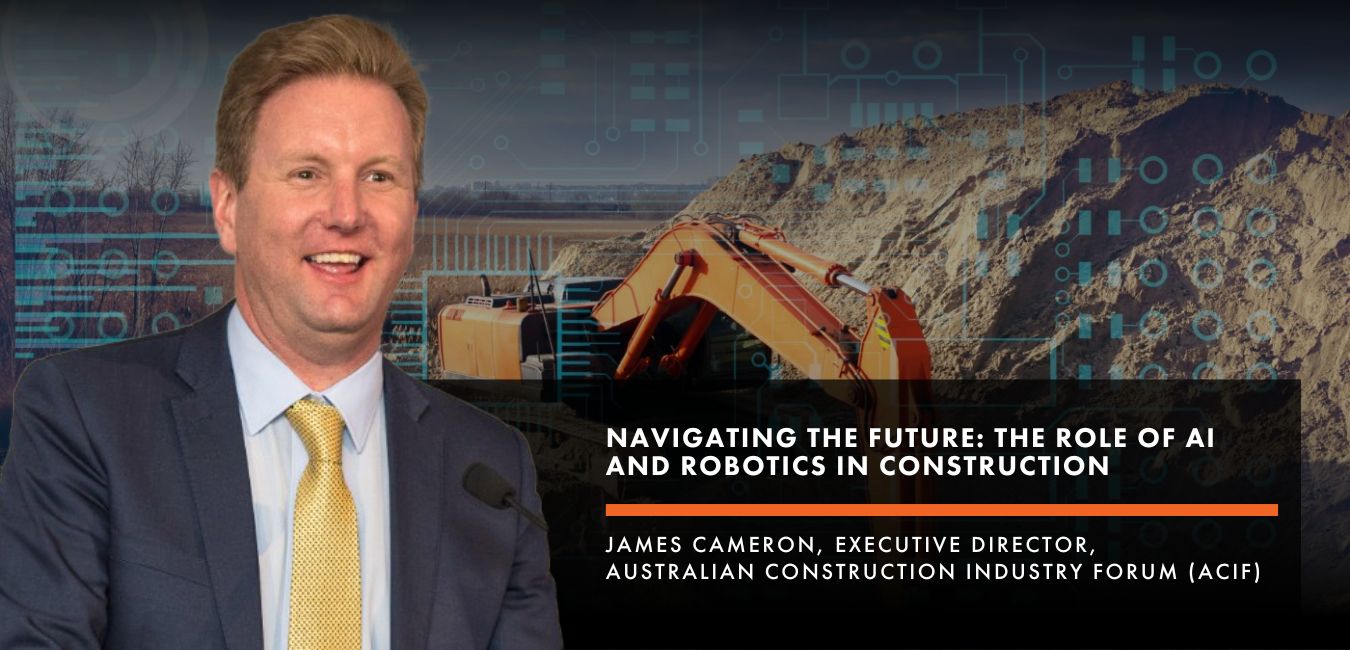FuturePlace Interview Spotlight, Angelique Mentis
At present, the EV-charging infrastructure industry is dominated by players with direct experience and expertise in the technology. These include charge point operators (CPOs) and owners, e-mobility service providers (EMSPs), original equipment manufacturers (OEMs), and utility and energy companies. A potential important player in the charging sector are parking operators. We talk with Angelique Mentis, President, Parking Australia on her experience of Australian parking operators regarding EV charging services and the challenges they face in rolling out EVCI.
FuturePlace: Do Australian parking operators generally see an opportunity within the EVCI sector, or do they consider the current barriers to entry too heavy now? Is this a sector they want to be part of currently?
Angelique Mentis: Yes definitely, Australian parking operators see opportunity within the EVCI sector, and you can see many of them have already installed and are actively promoting EV charging infrastructure in their parking stations. All the major operators here – Wilson, Secure, Care, First Parking – already have EV chargers in many of their sites. And yes, it is a sector that they want to be part of currently.
There are barriers to installing more EV chargers, but they are not necessarily things that the operators can control. If we just step back a moment to explain the landscape a little better. Everyone knows and sees the big-name parking operators and assumes they own the parking stations and the sites. But that’s not in fact the case. In these sites, the operators are exactly that. They come in and are contracted by the property asset owner, to run and manage the commercial operations of a parking station for the owner. While the individual contractual relationship at each site will vary depending on a host of different factors, the operator is just that – the operator. They don’t own the site, And as you would have no doubt discovered in the EVCI sector, there are a whole host of other factors and approvals, infrastructure upgrades, negotiations with the utilities/ energy provider and often even council approvals, that will often be required in order to upgrade electrical services in order to install EV charging infrastructure. In a lot of older car parks, the cost of retrofitting may be very high. This may involve circuit board upgrades to metered circuit boards, load management assessments, regulatory approvals, even utility provider upgrades to power supply to the entire building or neighbourhood.
These are not factors that the operators can control. And while yes, they are barriers, they are not barriers that the operators are creating. The operators need to go through the various processes with the building owners’ corporations, the landlords, the councils, other building tenants in many cases, and these all take time to navigate and negotiate for all stakeholders.
So, it’s important to understand that the operators are only one of the parties in the cogwheel here and in most cases, they cannot control it.
However, from what I have seen, the operators in Australia are keen to participate in EVCI.
I do also just want to note, that often there is a perception that the parking industry is just solely about the parking operators. But that’s not the case at all. Our stakeholders in the parking industry – are everywhere there is a parking space – from parking operators to property asset owners – airports, shopping centres, councils, hospitality venues, residential apartment complexes, corporate office buildings, hospitals, universities, suppliers, and most importantly – drivers. Basically, anywhere that there is a parking space, it’s also a potential EV charging bay – and that is a much broader definition of the parking industry.
“Basically, anywhere that there is a parking space, it’s also a potential EV charging bay.”
FuturePlace: We know that a few parking leaders such as Wilsons and Secure are testing EVCI opportunities in trials around the country. I’m not sure what their findings are to date. Do you have any feedback on these tests? Has there been any conclusions about how they will generate sufficient income to cover the high costs of EVCI installation?
Angelique Mentis: With the understanding of how there are a lot more participants in the EVCI opportunities for the parking operators, and how long it often takes to roll out the infrastructure due to the multiple stakeholders and approvals I’ve described above, it’s great to see the increasing deployment of EV charging bays rolled out at the parking operator/ charging sites as they are able. This is a very positive sign that the uptake is increasing. In terms of the commercials around revenue models and EV charging, I think. it’s important to acknowledge that we’re still in the early stages. Again, each site will have different commercials in their operator contractors, and different site owners may have different policy goals or outcomes they want to achieve. So, it will be very important for the operators to incorporate these capex costs into their financial modelling to work out the ROI for installing EV charging infrastructure in each site. Again, depending on the retrofitting or modifications required, the cost of the EVCI installation is something that will be negotiated with each landlord and then also for each site. It’s not a one size fits all approach.
FuturePlace: Is there overseas marketing that you consider offering a viable model for Australian parking operators to replicate? It’s interesting to see the changes in business and revenue models around EV charging as the market starts to mature.
Angelique Mentis: It’s interesting to see the changes in business and revenue models around EV charging as the market starts to mature.
As an industry body, we are very closely aligned and work with our counterparts in the US at IPMI and the NPA, and in the UK at the British Parking Association, and the various parking associations around the world. So, we are very close to developments as they occur overseas.
In so many jurisdictions around the world, to encourage the acceleration of adoption of EV charging, many locations offered EV charging for free. For example, in Denmark, in some of the public parking stations, it’s free to charge your EV. The same was the case in Australia – for example in many Westfield shopping centres, and even the NRMA, offered free charging at their sites, in the beginning to encourage EV driver uptake and accelerate adoption. Encouraging that greener behaviour. But as adoption has increased and the EV charging market now matures, many facilities owners are introducing some level of charging fee – whether this is a standalone charging fee or packaged up with a parking fee. And that’s something that’s necessary for the long-term sustainability of EV charging and parking.
When you think about it, you don’t go to the petrol station, fill your car, and the petrol station owner just lets you drive off with a full tank of petrol for free! You need to pay for it. It’s the same for EVs. Why should you fill up your battery and then drive off with a full car for free? Someone is still paying for that power you just charged your car up with.
So, while it was readily given in the early years to encourage uptake, it’s not something the industry can continue to viably do indefinitely. Each owner or operator needs to look at the commercials around how, when and where they charge for charging. And what they need to do to make it economically viable for them. It will take some time to settle into a balanced commercial model that works as they need to both recoup their initial capex investments to retrofit, and then turn a reasonable return on investment on maintaining and operating the charging equipment longer term, and factor in electricity usage costs.
I don’t think there’s a one size fits all model for all operators for all sites for the reasons I’ve discussed above.
And I think what we’ve found so far across the industry is that there’s still a bit of work that needs to be done for the EV charging equipment providers to work a bit more flexibly with the property asset owners where they want to install their EV chargers, to ensure that there is a fair compensation of them for use of their parking bays, and that there is more flexibility and negotiation around revenue sharing models. That it’s not all in the EVCI supplier’s favour. I think once we work those commercials out, there will be a far greater deployment of EVCI across a larger range of property assets with parking resources.
FuturePlace: Studies have shown that by and large EV drivers are content to pay a premium for a faster charge. What in your mind is the best way of parking operators using commercial DC fast charging infrastructure to generate revenue?
Angelique Mentis: That’s an interesting statistic and I’ve had a look at the data myself as well. And it’s important to step back and look at the customer story around that.
Globally, statistics indicate that approximately 80% of all EV charging are done at home. With the next most popular location for charging being at work. So, when you think about it, for EV drivers going to park at a parking station, what does their typical stay there look like? Most DC fast chargers will charge an entire vehicle from close to empty to full in less than an hour. So, the typical EV driver going to a parking station to park, isn’t going to go there on an empty tank. And how long are they going to stay there? Just one hour? You’ll find that when you look at the numbers, drivers will spend a longer time at a parking station – for example if they are at work for the day. Or if they are going to a sporting event or staying at a city hotel. So, their “dwell” time is going to be longer, and fast charging at that location doesn’t make as much sense. If they do use a fast charger there, then they are going to have to move it quickly as they would be fully charged – even if they are starting from nearly empty.
FuturePlace: The success of the fast-charging infrastructure industry in recent years has been linked to the interplay and collaboration between its various players. One of the most effective forms this business collaboration takes is under the guise of ‘destination charging.’ Are we seeing partnerships of this kind that parking operators are tapping?
Angelique Mentis: Where I believe fast charging is far more relevant and important is those long-distance road trips – in regional and rural areas, or between the major cities. The harder to access locations which are not typically your urban CBDs where the parking operators have their sites. So, in those locations, you’re relying on either Council, community associations like The NRMA or more typically the large networks like Tesla, to provide DC fast charging or supercharger networks. In those cases, you can see the use case for reliable commercial DC fast charging. And in those circumstances, you can see collaboration and partnerships coming together. in South Australia for example, you also have the South Australian Government working with Wilson and the RAA to roll out collaborative charging solutions.
FuturePlace: Where do you see Australian parking operators being in 10 years’ time regarding EVCI strategies? How does this issue rate against other issues they are considering?
Angelique Mentis: Again, I really think that parking operators are just a small component of how the parking industry is working collaboratively with EVCI strategies. The property and asset owners wherever there is a parking space are just as important as the operators. And they are all actively assessing, reviewing, and rolling out EVCI in their sites. And as with any old site that needs to be retrofitted there are a host of different considerations and physical challenges that they need to work through.
The Australian parking industry is working very proactively in the EVCI space, and it is front of mind.
I think the key here is that EVCI and parking industry participants work together collaboratively to achieve the best outcomes for the EV driver experience, the asset owner, and that the commercials are balanced and make economic sense for all participants.
And don’t forget that technology and innovation in EVCI is moving at an incredibly rapid rate as well. Innovations such as wireless charging, improved battery storage, vehicle-to-grid (V2G) capabilities, solar power integration, hydrogen fuel cells, and advancements in autonomous vehicles are shaping the EVCI landscape, making it a dynamic and rapidly evolving industry.
All to make our cities greener, smarter and better places to live.
For more information you can visit Angelique’s LinkedIn profile.
Angelique will be speaking at the EV Infrastructure Summit to explore industrial fleets and depots – Transforming to net zero, taking place on 4-5 June 2024 in Sydney.
It bring together over 300 senior executives from real estate asset owners, developers, investors, city governments, utilities/grid operators, infrastructure, urban design, sustainability experts and EV/Mobility players to discuss the latest industry developments and opportunities.







